|
|
|
Sort Order |
|
|
|
Items / Page
|
|
|
|
|
|
|
| Srl | Item |
| 1 |
ID:
166717
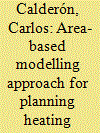

|
|
|
|
|
| Summary/Abstract |
Heat decarbonisation is the biggest challenge facing UK energy policy. This paper presents an area-based modelling approach to heat electrification using 17,741 dwellings in the city of Newcastle upon Tyne as a case study. The presented framework has been developed so as to address local energy policy questions on the impact of domestic electrical heating options. These questions reflect significant under-researched challenges such as the quantification of peak electricity demand for heat pumps based electrification options. The presented results show that the electrification of heat at city-scale will have a substantial impact on the local electrical grid infrastructure and provide a first indication of what the potential additional mean and (winter) peak household electricity demand ranges (i.e. 59–95%. This is significantly lower than what might be ascertained from existing literature). Furthermore, the results show that emission savings will be achieved with all electrification options studied but achieving the city's ambitious decarbonisation goals will require more exploration of the urban energy landscape. The paper further underpins the significance of sub-city modelling by enabling policy makers to identify housing neighbourhoods at LV sub-station for area-based delivery. Finally, an integrated modelling approach to cope with forthcoming energy system design challenges at LV scale is suggested.
|
|
|
|
|
|
|
|
|
|
|
|
|
|
|
|
| 2 |
ID:
127848
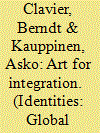

|
|
|
|
|
| Publication |
2014.
|
| Summary/Abstract |
Cities increasingly use artistic and cultural activities to promote active citizenship and social cohesion. We suggest that city-sponsored cultural and artistic practices in Sweden are finding a new discursive context in migration. In this article, we look at two artistic and cultural institutions in Malmö, Sweden: Arena 305 and Drömmarnas hus. We develop a typology of governmentalisation based on the work of Nicholas Rose and Peter Miller, which allows us to describe the governing activity of Arena 305 and Drömmarnas hus. What becomes visible is the discrepancy between the moral form of the political rationalities and the technologies of government: even though institutions may harbour ideals and principles of inclusion, they are perfectly capable of sustaining activities that brighten the very boundaries they set out to challenge.
|
|
|
|
|
|
|
|
|
|
|
|
|
|
|
|
| 3 |
ID:
127847
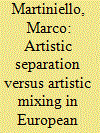

|
|
|
|
|
| Publication |
2014.
|
| Summary/Abstract |
This introductory article discusses the diversification of diversity in Europe. It then looks at the tension between ethnic separation and ethnic mixing in urban Europe in general terms. The next section elaborates on a similar tension in the field of popular arts. Finally, the article presents the main insights of the contributions to the special issue.
|
|
|
|
|
|
|
|
|
|
|
|
|
|
|
|
| 4 |
ID:
190729


|
|
|
|
|
| Summary/Abstract |
This article discusses the relationship between political subjectivity and urban space in three novels written in the immediate aftermath of the Partition of India: Qurratulain Hyder’s My Temples, Too, Mumtaz Shah Nawaz’s The Heart Divided and Yashpal’s This Is Not That Dawn. Despite extensive thematic and structural similarities, these early Partition novels have never been considered together and through a historical lens. Each narrative features moments of reckoning when the young protagonists are faced with sudden demands to become political in a new way, for example by abandoning secular anti-colonialism for communitarianism. The diversity of their experiences and responses, from bitter resignation to open-ended struggle, reflects the difficulties of constructing unitary selves expressing deep interior convictions aligned with collective identities. These transformations of political subjectivities are situated in and shaped by the heterogeneous urban spaces of Lucknow and Lahore, which establish the conditions of possibility for coexistence and its limits.
|
|
|
|
|
|
|
|
|
|
|
|
|
|
|
|
| 5 |
ID:
126535
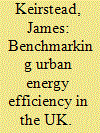

|
|
|
|
|
| Publication |
2013.
|
| Summary/Abstract |
This study asks what is the 'best' way to measure urban energy efficiency. There has been recent interest in identifying efficient cities so that best practices can be shared, a process known as benchmarking. Previous studies have used relatively simple metrics that provide limited insight on the complexity of urban energy efficiency and arguably fail to provide a 'fair' measure of urban performance. Using a data set of 198 urban UK local administrative units, three methods are compared: ratio measures, regression residuals, and data envelopment analysis. The results show that each method has its own strengths and weaknesses regarding the ease of interpretation, ability to identify outliers and provide consistent rankings. Efficient areas are diverse but are notably found in low income areas of large conurbations such as London, whereas industrial areas are consistently ranked as inefficient. The results highlight the shortcomings of the underlying production-based energy accounts. Ideally urban energy efficiency benchmarks would be built on consumption-based accounts, but interim recommendations are made regarding the use of efficiency measures that improve upon current practice and facilitate wider conversations about what it means for a specific city to be energy-efficient within an interconnected economy.
|
|
|
|
|
|
|
|
|
|
|
|
|
|
|
|
| 6 |
ID:
186419
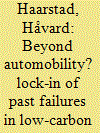

|
|
|
|
|
| Summary/Abstract |
Automobility, including the infrastructures, technologies and institutions that created high dependence on private car use, has led to significant environmental and climate problems and notably high carbon emissions. Now cities are attempting to move beyond this failed regime by experimenting with a range of different mobility innovations. In this paper, we examine whether emergent policy-led experiments and innovation processes in low-carbon mobility are learning from the past, or whether they are reproducing key elements of past policy failures. Through four case studies – Birmingham, Stavanger, Milton Keynes and Melbourne – we assess attempts to break out of high-carbon automobility through three key factors, namely diversification of travel options, a shift from individual to shared forms of mobility, and whether these aspects are implemented at scale. We find that while all cities show potential for diversification and sharing at scale, current modes of innovation exhibit features that may reproduce rather than reduce high-carbon automobility. Our analysis attributes this risk of continued failure to how policy-led experimentation and innovation are structured and themselves become locked in, thereby upholding the obdurate automobility regime.
|
|
|
|
|
|
|
|
|
|
|
|
|
|
|
|
| 7 |
ID:
131549
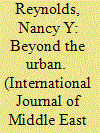

|
|
|
|
|
| Publication |
2014.
|
| Summary/Abstract |
Studies of public space focus disproportionately on cities. Complex and densely populated urban built environments-with their streets, plazas, institutional buildings, housing projects, markets-make concrete and visible attempts to manage difference. They also structure the ways that less powerful residents challenge and sometimes remake elites' spatial visions of the social order. The robust literature in Middle East studies on Islamic cities, colonial cities, dual cities, quarters and ethnicities, port cities, and so forth is no exception to this urban focus.
|
|
|
|
|
|
|
|
|
|
|
|
|
|
|
|
| 8 |
ID:
174913
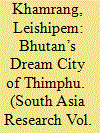

|
|
|
|
|
| Summary/Abstract |
Buttressed by the philosophy of Gross National Happiness (GNH), Bhutan’s development policies are inherently grounded in balancing material and spiritual well-being, while Bhutan’s capital city, Thimphu, has over the past few decades experienced phenomenal growth and urban transformation. This article builds on the notion of socio-spatial dialectic to examine the new forms of social ordering in the urban space of Thimphu. Critiquing the idealisation of Thimphu as a dream city for all, it endorses instead the development of regional growth centres and small towns. This underlines the potential of stimulating regional economic development, as a better strategy for inclusive growth and actualisation of Bhutan’s philosophy of GNH.
|
|
|
|
|
|
|
|
|
|
|
|
|
|
|
|
| 9 |
ID:
194808


|
|
|
|
|
| Summary/Abstract |
Rebels that fight near or capture cities gain more concessions from the government than those that remain in the periphery. Yet, not all groups challenge urban centers. Previous scholarship expects rebel strength to explain this strategic decision. However, weak rebel groups challenge cities, too. Our approach focuses on the conflict process more broadly. We argue that as the network of rebels challenging the government increases, opposition groups become more likely to attack cities as either they become emboldened, given the government’s disadvantage in multi-front wars, or they are propelled to strategic and resource centers in competition with the other groups. Statistical analysis of all African conflicts from 1989-2009 strongly supports this logic, while an exploration of most typical cases highlights each of these mechanisms in practice. This project thus links literature on civil war tactics and conflict contagion.
|
|
|
|
|
|
|
|
|
|
|
|
|
|
|
|
| 10 |
ID:
162900
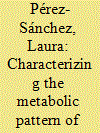

|
|
|
|
|
| Summary/Abstract |
The extreme degree of openness of contemporary urban systems with regard to both economy and population creates a serious challenge for the study of urban energy metabolism. A novel tool based on Multi-Scale Integrated Analysis of Societal and Ecosystem Metabolism (MuSIASEM) is proposed to overcome these challenges. It consists of an end-use matrix, a coherent multi-level integrated characterization of the uses of different forms of energy carriers (electricity, heat, fuels) for the various tasks performed in the city, including private and public mobility, tourism, commercial and residential activities. The end-use matrix integrates quantitative data referring to different dimensions (i.e. energy, human activity, land use, value added) and hierarchical (economic sectors and functional elements at lower levels) and spatial scales (i.e. individual buildings, neighborhoods, and the city as a whole). The end-use matrix provides information on both extensive (flows) and intensive variables (flow/fund ratios or benchmarks). Benchmarks are important for policy-making and allow a meaningful comparison of energy performance across hierarchical levels within the urban system, and among different urban systems. The approach is illustrated for Barcelona, a global city characterized by an important service sector.
|
|
|
|
|
|
|
|
|
|
|
|
|
|
|
|
| 11 |
ID:
101561
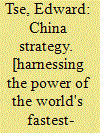

|
|
|
|
|
| Publication |
New York, Basic Books, 2010.
|
| Description |
247p.
|
| Standard Number |
9780465018253, hbk
|
|
|
|
|
|
|
|
|
|
|
|
Copies: C:1/I:0,R:0,Q:0
Circulation
| Accession# | Call# | Current Location | Status | Policy | Location |
| 055612 | 330.973/TSE 055612 | Main | On Shelf | General | |
|
|
|
|
| 12 |
ID:
144792
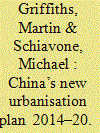

|
|
|
|
|
| Summary/Abstract |
Since 1978, China has emerged from being a predominantly agricultural economy to become the world’s largest economic power. Over the same period, the proportion of its population living in cities has more than doubled, from one fifth of the population in 1978 to more than half the population. Today, one tenth of the world’s population lives in Chinese cities. Over the past few years, there has been a growing concern over the sustainability of China’s economic development, which confronts a host of challenges, both external and internal. In light of those challenges, it has been suggested by many commentators that, among other policy changes, China will have to shift from its dependence on exports to a greater focus on domestic consumption. In this article we suggest that what has been dubbed the ‘new urbanisation’ by Chinese authorities is a useful lens through which to assess both the opportunities and challenges facing China as it navigates a path to more sustainable economic growth over the next few decades. It also provides a counterbalance to those commentators who focus solely on China’s growing military power as evidence of a rising China compared to the United States.
|
|
|
|
|
|
|
|
|
|
|
|
|
|
|
|
| 13 |
ID:
115705


|
|
|
|
|
| Publication |
2012.
|
| Summary/Abstract |
The study asks how well are cities doing in reducing their greenhouse gas emissions. Data from six cities with repeat GHG emission inventories for the period 2004-2009 is examined: Berlin, Boston, Greater Toronto, London, New York City and Seattle. All of the cities are reducing their per capita GHG emissions, primarily through changes to stationary combustion. On average the cities are reducing per capita emissions by 0.27 t CO2e/capita per year; this is about the same average rate as the cities nation states, although the cities are reducing emissions faster in percentage terms.
|
|
|
|
|
|
|
|
|
|
|
|
|
|
|
|
| 14 |
ID:
181172
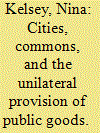

|
|
|
|
|
| Summary/Abstract |
The rise of climate-active municipalities – cities and towns voluntarily creating carbon reduction policy substantially more stringent than their host countries or the international system as a whole – presents a puzzle. Countries, with greater resources and the capacity to create binding agreements to overcome public goods problems, appear to view carbon reduction as an unappealing burden. So why are municipalities, with fewer resources and no way to guarantee a coordinated global effort, so eager to take on the potential disadvantages of stringent carbon reduction? Based on examination of municipal-level carbon reduction activity in Sweden and Portugal, I argue that in fact local-level climate activity represents not a burden but a tool. Municipal climate policy forms the basis for ‘paradiplomacy’ that captures goods for cities, creates international linkages for municipalities, and allows direct participation in setting the terms of global carbon commons policy. The evidence suggests that the nature of the climate commons – incompletely structured from a legal and political perspective, and open to access and intervention by actors at multiple levels – provides unique opportunities for actors to act as makers rather than takers of global governance structure and diplomatic effort in a critical area of emerging international policymaking.
|
|
|
|
|
|
|
|
|
|
|
|
|
|
|
|
| 15 |
ID:
122309
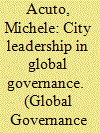

|
|
|
|
|
| Publication |
2013.
|
| Summary/Abstract |
The international society's lack of leadership is often blamed for many of the shortcomings in addressing global challenges. Yet this focus might have been on the wrong kind of leaders: rather than heads of state and diplomats, effective international responses might be better situated with the ordinary influence of city leaders. While capable of reaching beyond urban politics and developing transnational networks, mayors might represent a key hinge for the effective response to important challenges like climate change or sustainability. Against this scholarly oversight, this article demonstrates how mayors have a catalytic influence in global governance. Providing evidence of that role, it summarizes this agency through five nonexclusive features: regime promotion, governance hybridization, diplomatic entrepreneurship, normative mediation, and everyday international influence. Relying on the vast variety of city-led initiatives spawned in the past few decades, this article demands greater attention for the pivotal positioning of city leaders in global governance.
|
|
|
|
|
|
|
|
|
|
|
|
|
|
|
|
| 16 |
ID:
100487
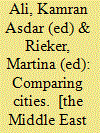

|
|
|
|
|
| Publication |
Karachi, Oxford University Press, 2009.
|
| Description |
xix, 349p.
|
| Standard Number |
978195474985, hbk
|
|
|
|
|
|
|
|
|
|
|
|
Copies: C:1/I:0,R:0,Q:0
Circulation
| Accession# | Call# | Current Location | Status | Policy | Location |
| 055510 | 307.765491/ALI 055510 | Main | On Shelf | General | |
|
|
|
|
| 17 |
ID:
189413
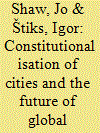

|
|
|
|
|
| Summary/Abstract |
The constitutionalisation of cities is analysed as a process through which urban residents operate as constitutionalising forces within their cities through lived experiences, practices and engagement, and cities try to impose themselves as constitutionalising forces within a rapidly transforming global society. This article explores the tensions generated by the constitutionalisation of cities. It focuses on identifying their character, assessing current economic and socio-cultural processes within cities and articulating a vision of the cityscape. Finally, it applies the idea of chronotopes, as developed in literary studies, to the study of cities. This multidisciplinary approach allows us to understand the constitutionalisation of cities, so far as they seek to break into a global society dominated by states and financial capital. It suggests a vision in which acts of urban citizenship may become emancipatory.
|
|
|
|
|
|
|
|
|
|
|
|
|
|
|
|
| 18 |
ID:
187176
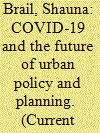

|
|
|
|
|
| Summary/Abstract |
The pandemic has brought major disruptions to cities, particularly in patterns of work and transportation. Predictions of the death of downtowns may have been premature, but urban planners are rethinking the traditional central business district, transit systems, public spaces, and other key features of city life as many office workers remain slow to return to old routines. As they face the prospect of lower tax revenues, governments will have a major role to play in helping cities adapt and stay vibrant.
|
|
|
|
|
|
|
|
|
|
|
|
|
|
|
|
| 19 |
ID:
188940


|
|
|
|
|
| Summary/Abstract |
Recent research on the informal sector has devoted considerable attention in examining how informal traders have been affected by the coronavirus in different temporal and spatial settings. However, less well understood is the extent to which central and local governments can cunningly use the veil of COVID-19 pandemic to regulate and re-shape the informal sector. Seeking to remedy this shortcoming in the prevailing accounts and utilising a qualitative research methodology including observations, discourse analysis, critical review of policy pronouncements, by-laws, legislation, video evidence from city officials, government, health authorities, vendors associations, newspapers articles and through a case study analysis of Harare City in Zimbabwe. The article contributes to the academic and policy discussions on how law, disease outbreak, policy and governmentality of African urban spaces intersect.
|
|
|
|
|
|
|
|
|
|
|
|
|
|
|
|
| 20 |
ID:
186421


|
|
|
|
|
| Summary/Abstract |
Recently, the concept of sustainable cities has become increasingly important because of serious technical and environmental challenges stemming from global warming. These challenges are related to an increase in the energy demand of cities, which is still met by non-renewable energy sources that release CO2 into the atmosphere. A carbon-free economy should be planned in a sustainable way by utilizing renewable energy sources and sustainable technologies. In this context, planning and implementing a hydrogen economy can be one solution to prevent these problems; sustainable urban planning has become a more complex issue, considering all these problems together. The main objectives in doing the present study are twofold, namely: (i) to provide an overview of the current status of hydrogen city projects and (ii) a conceptual hydrogen city planning model is presented for policy and decision makers. In this study, the initial hydrogen city projects are reviewed and summarized. And a conceptual hydrogen city planning model is presented for minimizing the carbon footprint of the cities. As can be concluded based on the status of the initial hydrogen city projects, which have been investigated and presented, these projects need more time to complete by considering the energy efficient technology.
|
|
|
|
|
|
|
|
|
|
|
|
|
|
|
|
|
|
|
|
|